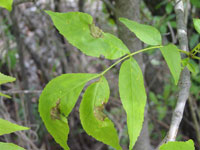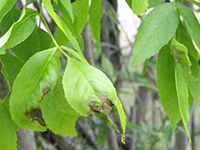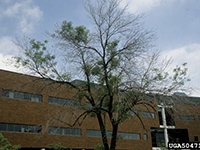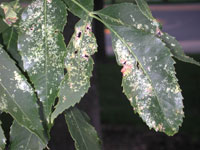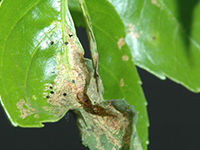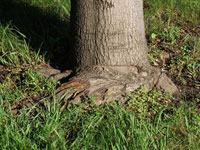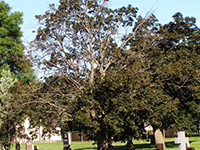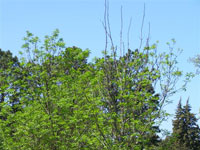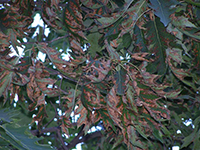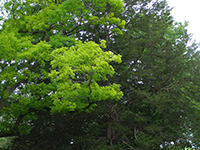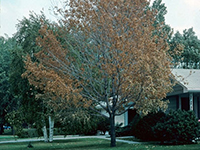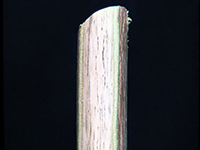Extension > Garden > Diagnose a problem > What's wrong with my plant? > Deciduous Trees > Ash > Leaves partially or completely brown
Ash > Leaves > Leaves partially or completely brown
1 of 5
Anthracnose
Discula fraxinea
- Tan to brown irregular spots on leaves, often causing leaves to be curled or deformed
- In severe infection leaves may wilt and fall off, part or all of the tree may lose its leaves
- Common on young leaves in cool wet spring weather
- Lower leaves and leaves in the inner canopy are often infected first, or most severely
- More information on Anthracnose
2 of 5
Ash plant bugs
- Damage occurs during spring but will be present remainder of summer
- Feeding cause speckled, pinprick whitish or yellowish discoloration; does not cause leaf drop
- Severe feeding can result in brown, dead areas, especially along edges of leaflets
- Nymphs bright red, then turn yellowish or brownish
- Adults brown and yellow with heart-shaped mark
- More information on Ash plant bugs
3 of 5
Stem girdling roots
- A root circling the trunk of the tree may be seen at the soil line
- The trunk may become sunken in or compressed where it contacts the root
- If the girdling root is below ground the trunk will lack the natural widening or flare at the soil line, but rather will go straight into the earth like a telephone pole
- Affected trees have slow growth, poor color, change color and lose their leaves early in the fall
- Affected trees commonly exhibit water-stress symptoms such as marginal leaf scorch, wilting, sudden leaf fall
- Affected trees commonly exhibit excessive and abnormal winter damage including true frost cracks and dieback
- More information on stem girdling roots
4 of 5
Environmental stress
Drought, compact soils, flood damage, winter injury, other
- Leaves wilt and turn brown at the tips and the margins first, then completely brown
- Many weak young shoots/sprouts at the base of the tree
- Leaves appear drooped or wilted within canopy
- More information on caring for trees and shrubs
5 of 5
Verticillium wilt
Verticillium dahliae
- Leaves are small and yellowed in chronic infections
- Leaves turn brown from the edges and tips, wilt and die in severe infections
- Leaf symptoms are often seen on only one branch in the canopy
- Tan to pale brown streaks often can be seen in the sapwood if the bark is peeled back, appearing as rings or arcs in a cross cut
- Symptoms may develop over a single growing season, or over several years
- More information on verticillium wilt



